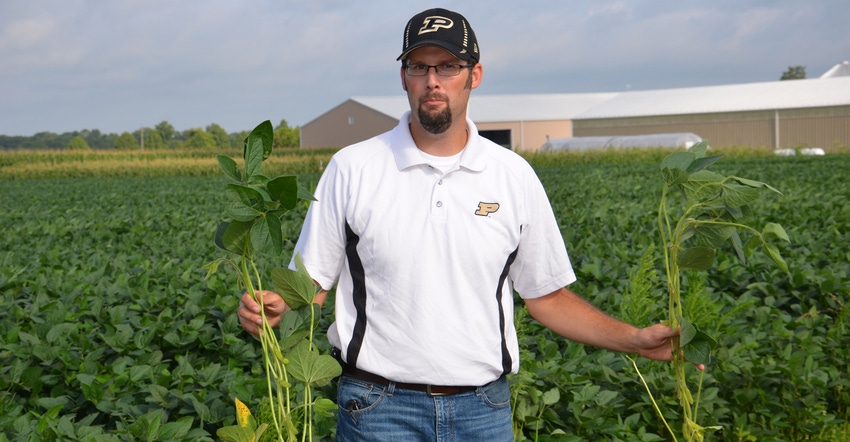
To say that 2019 has been an unusual crop year in Indiana and most of the country is an understatement. What’s still not clear is where this season will go down in history for yields and crop prices. What is clear is that it will be a race against the calendar for crops to both mature and dry down enough to allow for a reasonably efficient harvest.
Shaun Casteel, Purdue University Extension soybean specialist, has tracked progress — or lack of it — from the very start this year. “The 2019 season rivaled a couple other years in the last 40 for slowest planting progress for soybeans,” he says. “The Indiana soybean crop didn’t reach 50% planted until about mid-June. We were a full month late getting the crop in the ground.”
Soybeans respond to photoperiod, or length of nighttime, to help trigger reproductive stages; the crop overall was three weeks late reaching R3, or early pod set, which happened during the second week of August.
“Despite the super-slow start, the crop still had decent yield potential at that point,” Casteel says. “We knew then the outcome on yield was going to be all about weather in September. Normally August is critical for soybeans, but this year it’s September.”
What’s ahead
Based on modeling and projections, Casteel expects 50% of Indiana’s soybean crop will reach R7, or leaf shed, around the first week of October. If a killing 28-degree-F freeze occurs at a normal date based on the past 30 years, that portion of the crop should mature with some time to spare. Harvest would follow around mid-October.
The question mark comes on the other half of the crop, he acknowledges. “We need as many warm, sunny days as we can get from here on out,” Casteel says. Even if all or most of the crop matures before frost, harvest could easily run into early November.
Bob Nielsen, Purdue Extension corn specialist, says the picture is similar for corn. Even in northern Indiana, 100-day corn should reach black layer by early October, safe from a freeze, he expects. However, black layer in corn is 30% moisture or higher. Unless October is exceptional for field drying, there could be lots of wet corn and even some high-moisture soybeans to harvest this fall.
Like Casteel with soybeans, Nielsen says the final yield outcome in corn may not be known until combines run. There was drought stress in parts of the state in August, when many cornfields were pollinating, and during early grain fill.
About the Author(s)
You May Also Like




